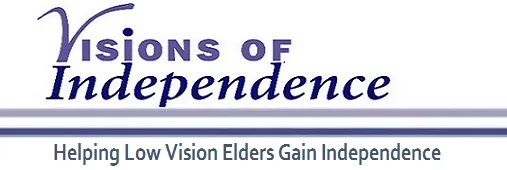Dual sensory loss
We found a study that examined the prevalence of dual sensory loss, both vision and hearing, among elders. The Lighthouse Inc. 2005, Amy Horowitz, DSW/Ph.D., Mark Brennan, Ph.D., Ya-Ping Su, Ph.D.
The study results suggest that among elders 70 and older, vision and hearing impairment were reported 35% and 42% respectively. Significantly, dual sensory impairment was found to affect more that one-fifth (21%) of adults age 70 years and older in the United States. Findings also supported the supposition that minority populations are at a great risk for both single and dual sensory impairments.
Visions of Independence believes that these are very important findings for ophthalmologists and optometrists. Not only are a significant number of their older patients experiencing vision loss, there is a possibility that they also have significant hearing loss. There is a strong likelihood that their patients cannot hear what their doctors are saying to them about their diagnosis and treatment. Further, the dual sensory loss significantly reduces patients’ ability to function independently without vision rehabilitation. Many low vision patients use their hearing to give them cues to do simple tasks like navigating around their homes. For example, the ticking grandfather clock tells them that they are near their living room. Dual sensory loss patients, however, can’t hear the auditory cues so navigating around their homes becomes very challenging. Dual sensory loss patients have told us that the trauma they face is profound. “Losing my vision separated me from things. Losing my hearing isolates me from people.
Vision rehabilitation cannot eliminate these challenges but it can make the coping with this very challenging situation much easier.
